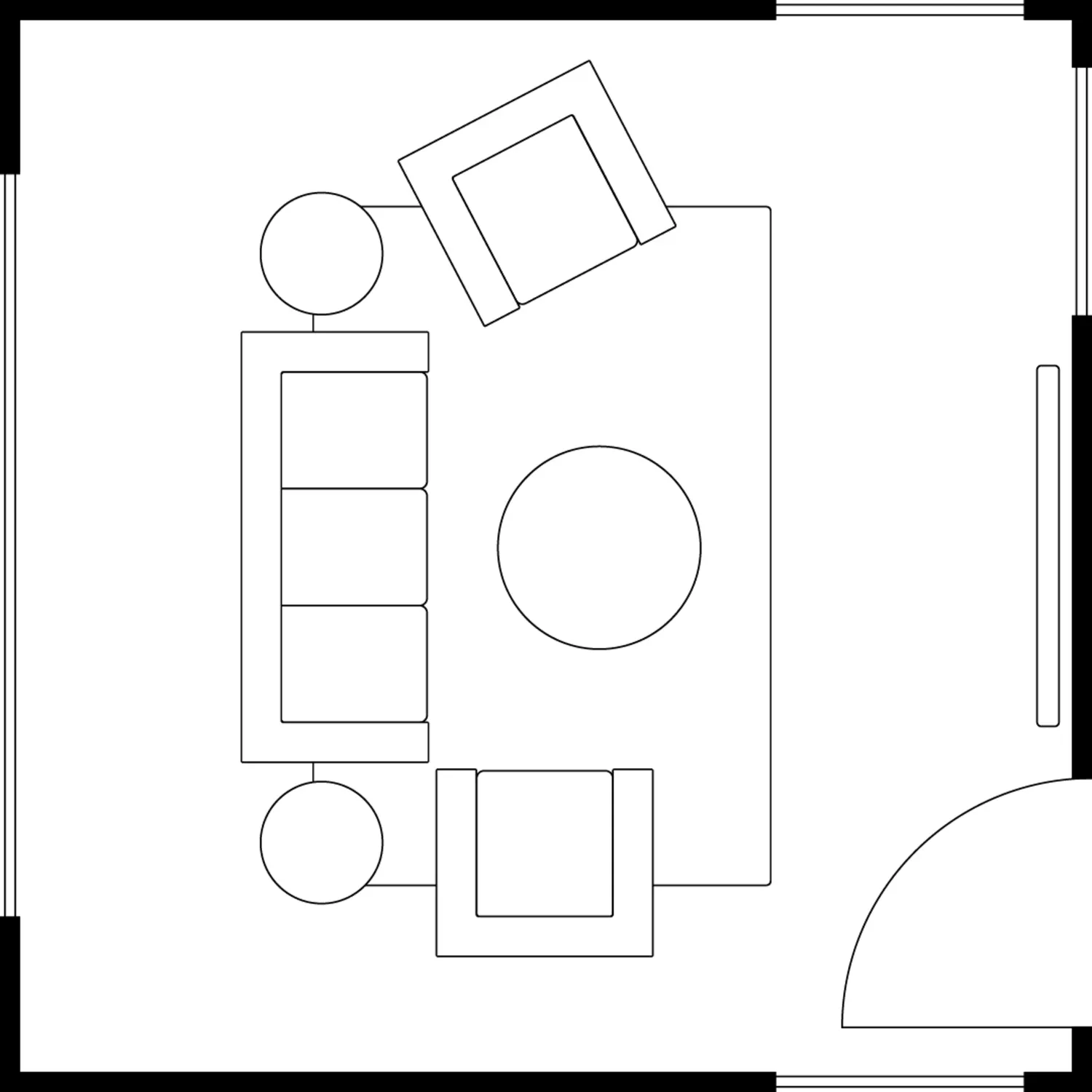Advice
February 4, 2025
By: Zara Sahota | Design Specialist
Feng Shui Tips for Your Living Room
Allow positive energy to flow throughout your home
What is Feng Shui?
Feng Shui, an ancient Chinese practice, translates to "wind" (feng) and "water" (shui), reflecting the interconnectedness of the natural elements and their influence on our lives. In the realm of interior design, Feng Shui serves as a guiding philosophy aimed at creating harmonious living spaces that promote balance, energy flow, and overall well-being.
At its core, Feng Shui is based on the belief that the arrangement of objects and the design of spaces can significantly affect one’s physical, emotional, and spiritual health. It emphasises the importance of Chi (or Qi), the vital life force that flows through all living things. In terms of interior design, the goal is to create an environment that allows Chi to flow freely, fostering a sense of tranquility, positivity, and prosperity.
When applying Feng Shui principles to interior design, several key elements must be considered:
Layout and Space Planning
The arrangement of furniture in the room is crucial. Spaces should be organised to facilitate smooth movement and interaction. Open pathways and clear sightlines are essential to allow Chi to flow without obstruction. For example, placing a bed in a commanding position—where one can see the door without being directly in line with it—can create a sense of security and control.
Feng Shui advocates for a balanced arrangement of furniture, which can create a sense of stability and harmony within a room. This can be achieved by using pairs of items, such as two nightstands flanking a bed or two chairs facing each other. Symmetry helps to create a visually pleasing environment that can promote tranquility.


Five Elements
Feng shui incorporates five natural elements—wood, fire, earth, metal, and water. Each element corresponds to different colours, materials, and shapes. For instance, incorporating wood elements can be achieved through plants or wooden furniture, while water elements can be represented with fountains or mirrors. Balancing these elements in a space enhances its energy and creates a more harmonious environment.
Colour and Light
Colours play a vital role as they are believed to influence mood and energy. For example, warm colours like red and orange can energise a space, while cool colours such as blue and green can promote calmness. Natural light and fresh air are also essential. Maximising daylight through strategic window placement and using mirrors to reflect light can invigorate a space and improve its overall ambiance. Interior design strategies ensure that air can circulate freely, contributing to a healthier and more inviting environment.
Clutter and Organisation
A fundamental principle of Feng Shui is to maintain an organised and clutter-free environment. Clutter can block the flow of Chi and create feelings of anxiety or stagnation. Regularly decluttering and organising spaces not only enhances the aesthetic appeal but also promotes mental clarity and emotional well-being.
It’s believed that sharp edges and corners can create negative energy, known as "Sha Chi." Therefore, furniture with rounded edges is preferred. If sharp-edged furniture is already in place, incorporating softer elements, such as cushions or throws, can help to mitigate any negative energy.
Bagua Map
The Bagua is a tool used in Feng Shui to analyse the energy of a space. It divides an area into nine sections, each corresponding to different aspects of life, such as wealth, health, relationships, and career. By overlaying the Bagua map onto a floor plan, designers can determine which areas need enhancement and how to implement changes effectively.
Make your house feel like a home and discover furniture and homewares collections that will live with you through every moment.
OZ Design. For Life.
Join our mailing list
Subscribe to our newsletter to be inspired and discover our latest promotions.
































